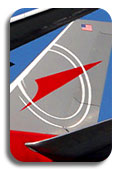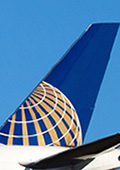Stick Pusher Stall Training
Three seconds later, the aircraft entered a stall. Of all the mistakes that were made that night, there was one that doomed the flight, and it is likely one that we the aviation community taught him.
For the next twenty seconds, Captain Renslow fought the Q400 in a semi-stalled state in a valiant attempt to maintain altitude, ignoring the stick shaker and pusher. In the end, Colgan 3407 entered a spin that he could not recover from and impacted the ground.But why did the captain react in such a manner?
When training and testing for a power-off stall in small aircraft for the commercial pilot certificate, the pilot slows to aerodynamic buffeting, then advances the power and accelerates while maintaining altitude. The throttle response from the piston engine is instantaneous, and aircraft flies away. Minimal altitude loss was the requirement, and zero loss of altitude was the standard. For the ATP flight test, an even easier recovery is made at the first indication of a stall, typically the stall-warning indicator.The reasoning for this was sound; a power-off or landing stall is encountered either on final or just over the runway outside of ground effect. Any loss of altitude in these situations could be fatal. When Captain Renslow stalled his aircraft, he had approximately 1,500 feet of altitude to work with, but when the situation became critical, he returned to his primary training and instincts and maintained altitude.In the aftermath of Colgan 3407, the FAA has been implementing many changes, some of them due to congressional mandate. One of the changes was the removal of traditional criteria in requirements for airman testing in power-off stalls, which was replaced with an examiners evaluation that should not mandate maintaining altitude during recovery.
Recently, the FAA issued a notice for Part 121 and 135 air carriers to incorporate enhanced stall and stick pusher training and testing into training programs by the summer of 2013. Advisory Circular 120-109, which came out in the summer of 2012 is the main reference to this notice, and stresses the importance of reducing the angle of attack during stall recovery. It changes the philosophy of power-out to fly-out when recovering from a stall. It includes examples of stall scenarios, including one similar to Colgan 3407. The details on how to conduct stall training and testing in AC 120-109 will be incorporated into training manuals over the next several months. This training for large turbine powered airplanes is distinctly different than traditional training for small general aviation airplanes.
On the transport category airplanes, the stall warning will activate about 5-8 seconds prior to full stall (ref. 25.207). Turbojet engines at idle may require up to 8 seconds before reaching a minimum of go-around thrust (ref. 25.119). This delay can even be longer in the flight levels. The result is the aircraft's speed will continue to deteriorate after a stall warning is activated and a full stall may develop prior to sufficient thrust being available to fly out of the situation; a loss of altitude is required to maintain minimum flying speed until sufficient power is available.
The lag in turbojet engines has diminished with improved versions and especially with FADECs. The traditional training in airlines that incorporated a small loss of altitude in power-off stall recoveries was in some cases replaced with training and testing that was more relevant for light piston aircraft. The rapid response of the newer engines made this possible, though not appropriate.
Notice 8900.205 and AC 120-109 will change training programs and incorporate realistic scenarios to 121 air carriers, as well as 135 air taxi operations and simulator training centers. This training will reinforce, and not contradict the new testing standards for the Commercial Pilot and ATP certificates.
By David J. Williams, ATP EMB-145, LR-60
-

Delta Air Lines 04/23/2024
-

United Parcel Service 04/23/2024
-

Hawaiian Airlines 04/22/2024
-

United Airlines 04/22/2024
-

JetBlue Airways 04/19/2024
 AIRLINE PILOT CENTRAL
AIRLINE PILOT CENTRAL